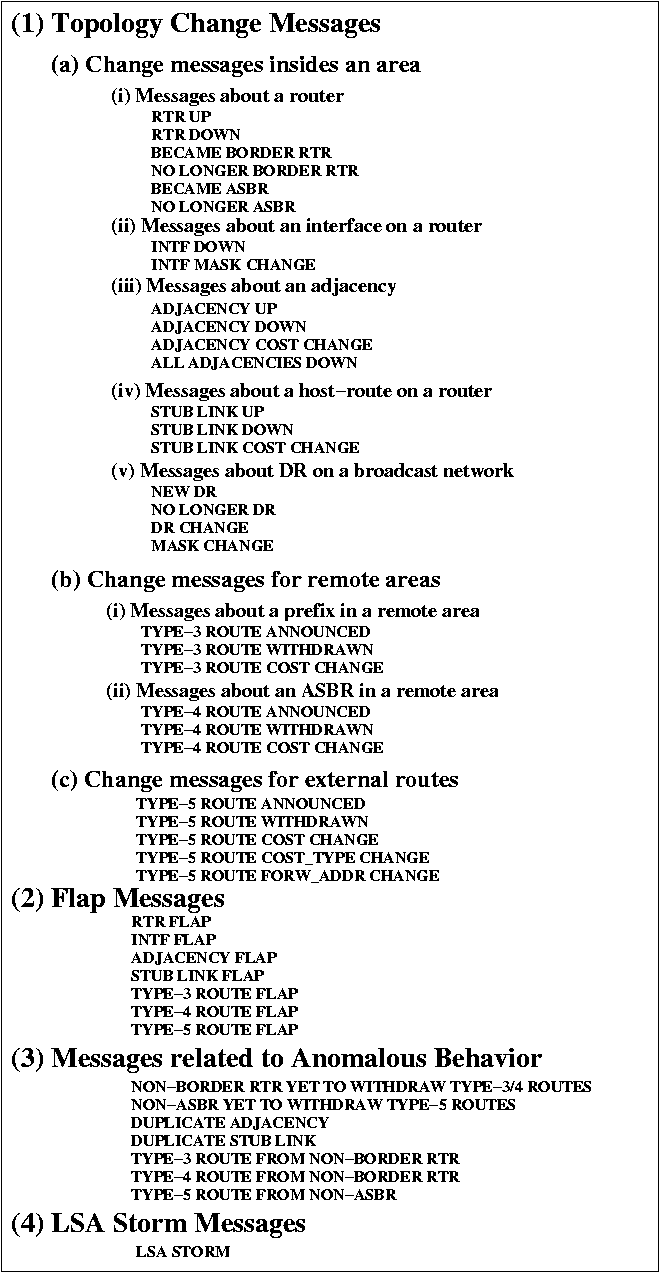



Next: Topology Model
Up: LSAG
Previous: LSAG
6.1 Classification of Real-time Messages
|
Figure 2:
Classification of the LSAG messages.
Figure 2
shows classification of various message types supported by the LSAG.
Each message contains a time-stamp, and a message type along with the
attributes.
The message type is used for identifying the kind
of event or problem in the network.
For example, a ``RTR DOWN'' message is issued
when OSPF process on a routes dies.
The attributes provide more detail about the message.
For example, if the message type is ``RTR DOWN'',
the attributes include the router-id of the associated router.
Let us describe the four top-level categories shown in
Figure 2:
- 1.
- Topology Change Messages:
These messages are generated for changes in the network topology.
As Figure 2 shows,
majority of message types fall into this category.
These messages help operators identify problems
in the network,
as well as help them validate maintenance activities.
- 2.
- Flap Messages:
These messages are generated for network elements (e.g., router,
link etc.) that go up and down repeatedly.
These messages are always preceded by topology change
messages.
For example, a ``RTR FLAP'' message is preceded by several
``RTR DOWN'' and ``RTR UP'' messages.
These messages are useful for getting an operator's attention.
They also act as early warning signs to the network stability.
- 3.
- Messages related to Anomalous Behavior:
These messages are generated when the observed behavior
deviates from the expected behavior of OSPF.
An example of an anomalous behavior is a non-border router
originating summary LSAs (the corresponding message type
is ``TYPE-3 ROUTE FROM NON-BORDER RTR'').
Often these messages indicate configuration
errors or bugs in the vendor software.
- 4.
- LSA Storm Messages:
These messages are generated when too many
refresh instances of an LSA are observed by the LSAG.
Often these messages indicate bugs in the vendor software.
They also act as early warning signs to the network stability.



Next: Topology Model
Up: LSAG
Previous: LSAG
aman shaikh
2004-02-07

